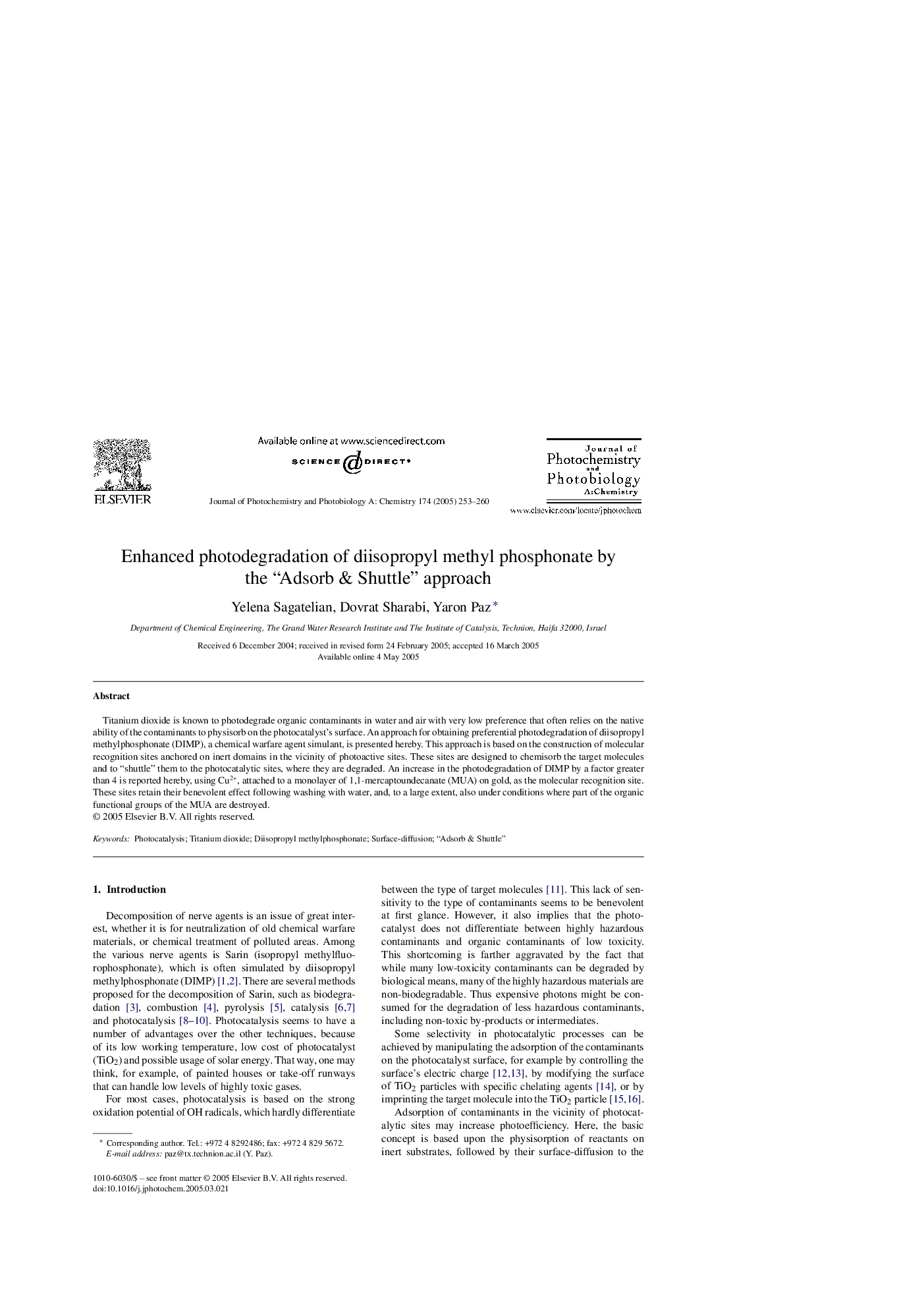| Article ID | Journal | Published Year | Pages | File Type |
|---|---|---|---|---|
| 9605508 | Journal of Photochemistry and Photobiology A: Chemistry | 2005 | 8 Pages |
Abstract
Titanium dioxide is known to photodegrade organic contaminants in water and air with very low preference that often relies on the native ability of the contaminants to physisorb on the photocatalyst's surface. An approach for obtaining preferential photodegradation of diisopropyl methylphosphonate (DIMP), a chemical warfare agent simulant, is presented hereby. This approach is based on the construction of molecular recognition sites anchored on inert domains in the vicinity of photoactive sites. These sites are designed to chemisorb the target molecules and to “shuttle” them to the photocatalytic sites, where they are degraded. An increase in the photodegradation of DIMP by a factor greater than 4 is reported hereby, using Cu2+, attached to a monolayer of 1,1-mercaptoundecanate (MUA) on gold, as the molecular recognition site. These sites retain their benevolent effect following washing with water, and, to a large extent, also under conditions where part of the organic functional groups of the MUA are destroyed.
Keywords
Related Topics
Physical Sciences and Engineering
Chemical Engineering
Bioengineering
Authors
Yelena Sagatelian, Dovrat Sharabi, Yaron Paz,
